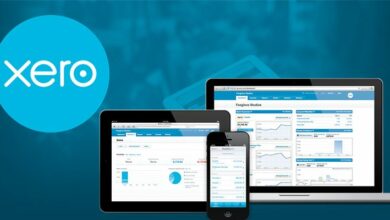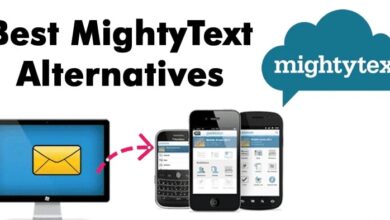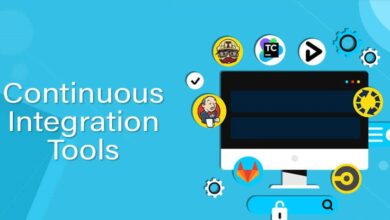Why HTML Editors are Crucial to Learning Management Systems

A WYSIWYG HTML editor is essential for making next-generation applications and websites. It allows developers and designers to view code changes as they appear once displayed immediately.
Most WYSIWYG editors are packed with features, significantly reducing developers’ coding work while giving users what they need to perform content-related tasks.
Because of the evident increase in efficiency and user-friendliness, the use of such editors across various projects has skyrocketed recently. One popular use case for WYSIWYG HTML editors is Learning Management Systems (LMS).
What is a Learning Management System?
Learning Management Systems (LMS) emerged from the need to automate learning processes. At some point in the modern world, people wondered whether they could make learning more convenient for others. And they did so by introducing LMS.
These applications or websites allow educators and educational institutions to provide a suitable learning environment. Similarly, they let students learn as they would in a traditional setup but with added convenience.
For instance, course materials such as lecture notes, presentations, and documentation can be given through an LMS website, reducing or eliminating the need to distribute papers.
This also secures exam papers and content. Aside from that, students could view their grades, courses, and schedule online.
Another benefit of LMS is that learners won’t have to be physically present to learn, which has been especially handy since the recent pandemic began. Having an LMS in your school, business, or learning website reduces the amount of work for students and teachers, increases credibility, and provides great convenience.
At the heart of Learning Management Systems is content creation and editing. Learners should be able to create content for their requirements, collaborate with others, and enroll in various courses. On the other hand, educators should be able to create content for coursework and assess students’ work.
Therefore, an LMS needs a reliable, fast, and feature-rich way of creating and editing content. And that’s precisely what WYSIWYG editors provide.
Why are HTML editors crucial to LMS?
To show why WYSIWYG HTML editors are an essential part of LMS, we’ll be looking at the benefits of using them.
1. They have all the rich text editing features you’ll ever need.
It’s said that you should never reinvent the wheel, and in the case of a WYSIWYG HTML editor, that’s very true. Of course, you can make your content editor, but plenty of factors will make doing so very difficult.
For example, to build a modern content editor for your LMS, you must include every rich text feature you can see in many word processors.
That includes text and paragraph formatting, highlighting and styling, inserting media files and tables, printing, exporting, and so on. Besides, users expect all those features to be included in every content editor. In addition, it will take months or even years of development time to make an entire modern content editor.
On the other hand, using a WYSIWYG HTML editor means you already have all the necessary rich text editing features your users need.
This means that you won’t burden LMS developers with the heavy task of handling content editing. This will keep them focused on other coding tasks (e.g., back-end scripts, error handling, etc.) and let them deploy their LMS faster and with fewer errors.
2. You won’t have to worry about the user interface and user experience.
One of the most significant contributors to a software product’s success is its UI and UX.
This includes design, ease of use, navigation, responsiveness, and speed. A great content editor for LMS should consider the following:
- A clean, organized, and intuitive design for efficiency
- Mobile-friendliness and responsiveness to accommodate every possible device a learner can use
- A fast initialization, loading, and response time to prevent frustration and provide a seamless experience
If you use a WYSIWYG HTML editor, you’ll immediately get the optimal design and speed. Having been made and continually developed by experts, these editors will ensure that your LMS users have a content editor they love using.
This leads to better learning quality and fewer interruptions.
3. You can easily integrate them into your LMS app or website.
When making an LMS, you must ensure that you can integrate any third-party software you use efficiently. If it’s not, you’ll spend some time on just the first step when you could spend it elsewhere.
Luckily, the best WYSIWYG HTML editors come with features that you’ll need an easy integration with LMS. They only require you to add one to three lines of code after installation, and you can get started immediately.
4. Leading editors have the autosave feature.
Autosaving is one of the essential features that learners and educators look for in an LMS content editor. It is the ability to save content automatically from time to time or whenever changes are made.
This feature allows users to take breaks, leave their content for a while, or go through unexpected power outages with their content still intact.
Usually, to implement autosaving, you’d have to write a script that either activates after a set time interval or watches for changes in content.
Once the condition is met, the script captures the editor’s content and sends it to a server for updating or processing.
If you use the leading WYSIWYG editors, autosaving is made easy. Instead of writing an additional script, you only have to enable the autosave option and specify an interval, the link to your server, and the content.
Of course, you’ll still need a back-end script to process the content, but all the front-end factors of autosaving won’t be a problem anymore.
5. Some WYSIWYG editors have built-in collaboration features.
Today, the best learning management systems are expected to have collaboration features such as real-time editing, revision history and management, chat, comments, and mentions. features.
These allow learners to carry out group tasks and projects with others without having to switch between platforms, apps, or browser tabs.
This is a complicated system in itself, and trying to implement it from scratch will take lots of time and will take your focus away from the core features of your LMS. The solution then is to use a WYSIWYG editor that already has support for collaboration.
And what’s even better is that implementing collaboration features using WYSIWYG editors is as simple as adding an event and specifying some options. Once you have that setup, your users will be delighted to know that they’ll only have to use one platform for all their needs, including collaboration.
6. The best editors allow the customization of components.
To provide the ideal learning experience for users, an LMS must have components that are consistent, intuitive, and simply right for your requirements.
Thus, an LMS must have components that are customizable for granularity. This helps build brand identity and ensures that your editor only has what your users need. Here are some of the most critical editor elements that need to be customizable:
- Custom icons for a better site or app personalization
- Custom dropdowns
- Custom themes to align your editor’s look and feel to the rest of the application
- Custom toolbar for complete control of what you want your users to do and see
- And others
Leading WYSIWYG editors allow users to customize components easily.
7. They take heavy maintenance work off your hands.
It’s no secret that LMS are maintenance-heavy because of their numerous features. Developers always need to ensure everything, especially content editing features, is working correctly.
This is made more difficult when new functionality is added, or significant changes occur.
With WYSIWYG editors, you will never have to maintain anything content editing-related. Just integrate, and you’ll get either the latest version or a stable version that will work for years.
8. Some of them allow your LMS to be used by everyone.
Lastly, WYSIWYG HTML editors are essential to LMS because they support accessibility.
This means that some of these editors have complied with various regulations and standards to ensure that as many people as possible can use the app.
This includes accessibility features for disabled people as well as language support for learners across the globe. After all, learning should be for everyone, right?
Summary
This article tackled why WYSIWYG HTML editors are crucial to LMS. We’ve given several reasons, including UI/UX, features and capabilities, developer-friendliness, faster deployment, fewer errors, and so on.
You also use a WYSIWYG editor for LMS whenever you use a learning management system. Based on what we’ve discussed, it is evident that WYSIWYG editors and LMS go together.
A great LMS needs to have the following: basic and advanced rich text editing features; a beautifully-designed interface with UX in mind; speed; a good deal of customization; and accessibility. And these can all be covered just by choosing the right WYSIWYG HTML editor.



